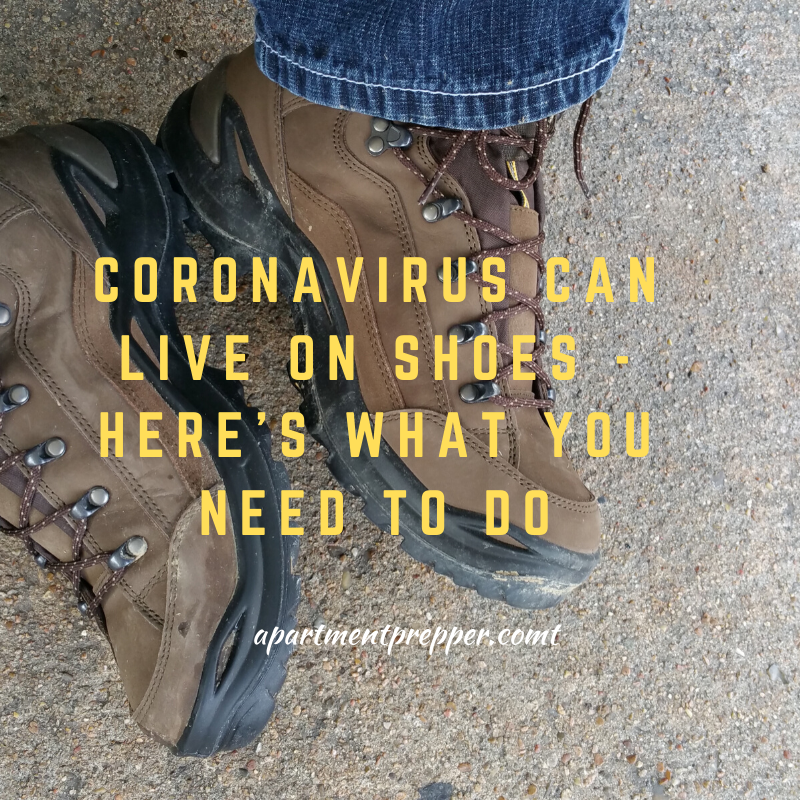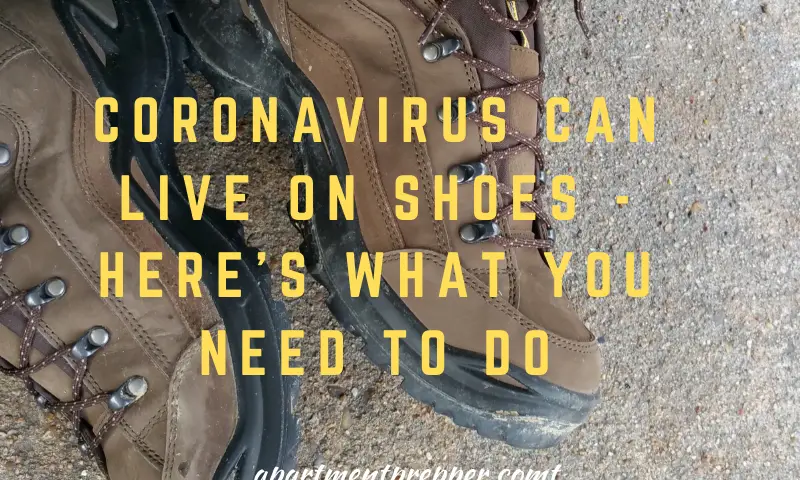Written by Bernie Carr
According to a study done by the CDC: the coronavirus was found to be tracked by shoes.
“…as medical staff walk around the ward, the virus can be tracked all over the floor, as indicated by the 100% rate of positivity from the floor in the pharmacy, where there were no patients. Furthermore, half of the samples from the soles of the ICU medical staff shoes tested positive.”
It was already well known before the coronavirus pandemic happened that shoes carry a lot of germs. According the University of Utah, shoes carry bacteria such as E.coli picked up from restroom floors and the outdoors. But the findings of the CDC study that coronavirus can be tracked by shoes makes it even more imperative that we pay attention to what our shoes may be tracking into our homes.
Distinguish between shoes for inside or outside the home
Each member of the family has a pair of slippers or flip flops that are worn only inside the house. Shoes we were outside are never worn inside the house.
Designate an area for your outside shoes
Some people leave their shoes outside, but you may not be able to do that depending on your layout. In our household, we set up a shoe rack near the entryway, where we leave all our frequently worn shoes.
Clean your shoes
Periodically clean your footwear including the bottom of your shoes. Use an alcohol wipe such as Clorox wipes.
Keep young kids away from shoes
Many young children especially toddlers who crawl around the house will touch the floor and bottoms of shoes, then place their hands in their mouths. If you have very young children at home, keep shoes outside and away from them.
Wash your hands
It’s easy to forget, but make sure you wash your hands after touching your shoes.
Nix the “5-second” rule
If you’re not familiar with the 5-second rule, it’s the rationale used when people drop a piece of food; if they pick it up right away – within five seconds – it’s safe to eat. The rule usually applies to a treat such as candy or chip; rarely would it apply to a carrot or celery stick.
Of course it’s dubious at best. According to WebMD, experts say it takes less than five seconds for microorganisms to transfer from the floor to a dropped piece of food. So you should never eat something you picked up off the floor no matter how quickly it was there. During these days of COVID-19, it’s best to ditch the 5-second rule. I hate waste, but if I drop a piece of food on the floor, I’d grudgingly throw it out, no matter how good it might have been.
**********************************************************************
We are an affiliate of Amazon.com, which means we received a small commission if you click through one of our Amazon links when you shop, at totally no cost to you. This helps keep the lights on at the blog. Thanks!
About the author:
Bernie Carr is the founder of Apartment Prepper. She has written several books including the best-selling Prepper’s Pocket Guide, Jake and Miller’s Big Adventure, The Penny-Pinching Prepper and How to Prepare for Most Emergencies on a $50 a Month Budget. Her work appears in sites such as the Allstate Blog and Clark.com, as well as print magazines such as Backwoods Survival Guide and Prepper Survival Guide. She has been featured in national publications such as Fox Business and Popular Mechanics. Learn more about Bernie here.



Happy to do a podcast for your community. I am a Foot & Ankle Specialist. We can chat about this or any other questions you may have for your audiences.
Hello Dr. Benji, We don’t have a podcast at the moment, however if you don’t mind answering a few questions, I will email them instead. Thank you for your interest.